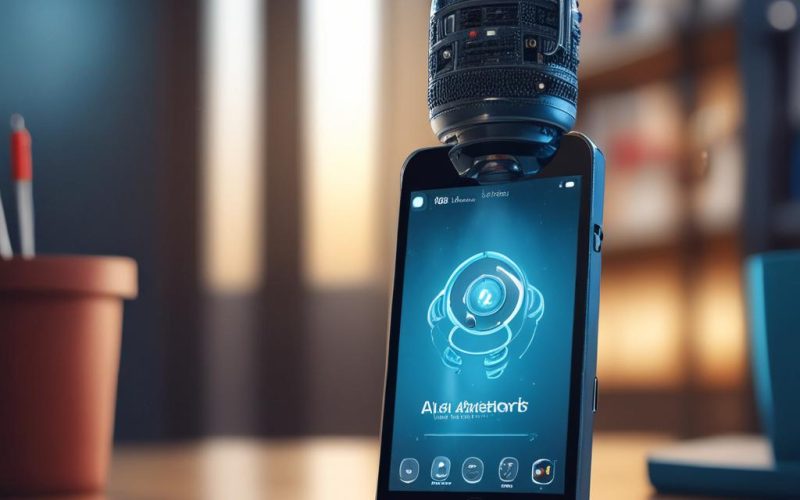Table of Contents Show
Imagine controlling your smart home with a simple voice command, or having a personal assistant that responds to your needs without lifting a finger. AI voice assistants like Siri and Alexa have revolutionized how we interact with technology, but did you know you can build your own using an Arduino and a voice recognition module? This DIY project combines hardware tinkering with artificial intelligence, offering a hands-on way to explore voice-based automation. Whether you’re an electronics enthusiast, a hobbyist, or a beginner in AI projects, this guide will walk you through creating a customizable, cost-effective voice assistant that responds to your commands.
Historical Timeline
2015
First affordable voice recognition modules for Arduino released
2017
Open-source AI voice assistant projects gain popularity
2019
Improved accuracy in voice recognition with machine learning
2021
Integration of cloud-based AI with Arduino for better performance
2023
DIY voice assistants become mainstream for hobbyists
Timeline infographic for Build an Ai Voice Assistant Using Arduino and Voice Recognition Module
Understanding the Components for AI Voice Assistant Development
Key Hardware Requirements
To build a functional voice assistant, you’ll need the following hardware:
- Arduino Board (Uno or Nano): Acts as the brain of your assistant, processing input and output commands.
Software and Libraries
Software bridges the gap between hardware and AI functionality. Key tools include:
- Arduino IDE: For uploading code to your Arduino board.
Step-by-Step Hardware Setup for Voice Assistant
Connecting the Voice Recognition Module to Arduino
Follow this wiring guide to connect your voice recognition module:
- Connect VCC to the Arduino’s 5V pin.
Refer to the module’s datasheet for specific pin configurations and soldering tips.
Integrating the Speaker and Power Supply
For TTS output, connect a speaker via an audio amplifier or a dedicated TTS module. Power your setup using a stable USB source or a 9V battery, ensuring consistent voltage to avoid glitches.
Adding Storage (SD Card Module)
An SD card stores voice commands and AI models. Connect it using the SPI interface:
- Link MOSI, MISO, SCK, and CS pins to corresponding Arduino pins (e.g., D11, D12, D13, D10).
Programming the Arduino for Voice Recognition and AI Integration
Writing the Voice Recognition Code
Install libraries like `VoiceRecognition` and `DFPlayerMiniMp3` in the Arduino IDE. Here’s a basic code snippet:
“`cpp
include
include
void setup() {
VoiceRecognition.begin(9600); // Initialize voice module
DFPlayer.begin(DFPLAYERTX, DFPLAYERRX); // Initialize audio module
}
void loop() {
if (VoiceRecognition.available()) {
String command = VoiceRecognition.readCommand();
if (command == “LIGHT ON”) {
DFPlayer.play(1); // Play audio response
}
}
}
Customize commands and responses as needed.
Integrating AI for Command Processing
For advanced processing, use Python for NLP tasks. Send text data from Arduino via serial communication to a Python script that uses Google’s Speech-to-Text API or a local model like TensorFlow Lite.
Creating Text-to-Speech Functionality
Use the `DFPlayerMiniMp3` library to play pre-recorded audio clips or a TTS library like `eSpeak` for synthesized speech. Sync responses with user commands for seamless interaction.

Testing and Troubleshooting the AI Voice Assistant
Common Hardware Issues and Solutions
Check for:
- Loose connections or incorrect wiring (use a multimeter for diagnostics).
Software Debugging and Optimization
Debug using the Arduino Serial Monitor or Python’s IDE. Address recognition errors by recalibrating the microphone or adjusting noise thresholds.
Enhancing Accuracy and Performance
Improve accuracy by:
- Calibrating the microphone for optimal sensitivity.
Customizing and Expanding Your Voice Assistant
Adding New Voice Commands
Train the module to recognize new keywords by updating the Arduino sketch or Python script. Map commands to specific actions (e.g., toggling lights via relays).
Connecting to Smart Home Devices
Integrate with IoT platforms like Blynk or use relays to control appliances. Example code:
“`cpp
if (command == “SMART LIGHT ON”) {
digitalWrite(relayPin, HIGH); // Turn on a light
}

Improving the AI Capabilities
Add features like sentiment analysis, weather updates, or voice biometrics using cloud APIs (e.g., IBM Watson, Microsoft Azure).
Designing a User Interface
Use an LCD screen or a mobile app (via Bluetooth) to display commands and responses.
Final Assembly and Deployment
Building the Enclosure
Design a DIY enclosure using 3D-printed parts or a cardboard box. Ensure ergonomic accessibility for the microphone and speaker.
Powering the Device Permanently
Opt for a wall adapter or LiPo battery for long-term use, with a voltage regulator to prevent damage.

Real-World Use Cases
Deploy your assistant for:
- Home automation (e.g., lighting, temperature control).
Conclusion
Building an AI voice assistant with Arduino and a voice recognition module is a rewarding project that merges hardware and software innovation. From setting up components to coding voice interactions, this guide provides a solid foundation for creating a custom assistant. The best part? You can continually expand its capabilities, making it uniquely yours. Whether for personal use or as a learning tool, this project offers immense value and endless possibilities. Ready to start? Grab your Arduino and dive in!
FAQ Section
Q1: Why use Arduino for a voice assistant instead of Raspberry Pi?
Arduino is more cost-effective and simpler for beginner-level projects, while Raspberry Pi offers more processing power for advanced AI tasks.
Q2: What voice recognition modules are compatible with Arduino?
Popular options include I²S microphones, MAX98357A, and dedicated voice recognition shields like the EasyVR.
Q3: Can I add multiple voice commands to my assistant?
Yes, by expanding the Arduino sketch or Python script to include additional keyword mappings.
Q4: How do I improve the accuracy of voice recognition?
Calibrate the microphone, reduce background noise, and use clear enunciation for better results.
Q5: What if my assistant does not respond to commands?
Check wiring, ensure libraries are correctly installed, and verify the microphone’s audio input.




